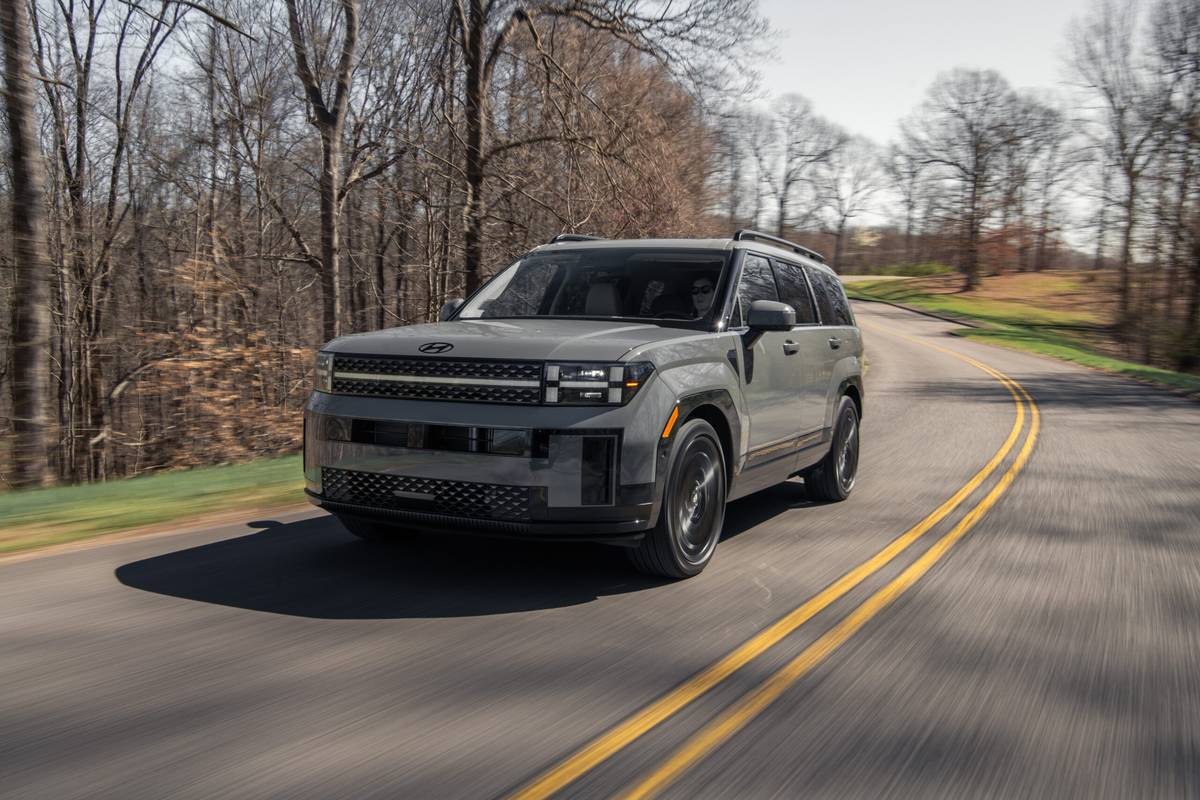Boston.com's view
The ability to stand out from the crowded compact sport utility vehicle market segment isn’t easily achieved. One SUV that does is the Nissan Xterra.
It does a lot of other things well, too; and some not quite so well, depending on your taste. But from top (tubular-styled roof rack) to bottom (tubular-style step rails), it’s a distinctive vehicle.
To look at it is to know that it’s not designed to run down to the supermarket once a week. It’s made to lug stuff, go places, and do things – the activities the Gen X types (hence the X) like to do in the great outdoors (hence the Terra).
A bulked-up station wagon it isn’t. It looks tough and indeed there is substance behind the macho styling. It’s built on the same platform as the Nissan Frontier pickup truck, with truck-style rear leaf spring suspension.
See an Xterra in your rearview mirror, and you know it means business.
There’s the black front fascia with its round headlights and round foglights, flared front fenders, big tires (P265/70R16 all-seasons), and the Nissan flying “V” grille fills your vision. Whether you like the plastic-fascia styling or not, it certainly doesn’t get the stone dings that plague painted vehicle noses.
Get inside and look forward, and you see a hood with a “power bulge.” In our XE 4×4 model, that bulge hid a supercharged 3.3-liter V6 producing 210 horsepower and 246 lb.-ft. of torque. That power, awaiting the heavy touch of your foot, leaves one no way to say this Xterra is underpowered.
On the road, it betrays its truck-like origins, riding stiffly and busily on the highway without a lot of road “feel” in the steering wheel. It’s noisier than most vehicles these days, and, at idle, the supercharger does a good bit of typical-of-the-breed rattling and humming.
The supercharger otherwise doesn’t reveal itself until you tromp the accelerator. In normal driving, it’s not even noticeable. But give it the on-ramp test, and it surges forward impressively. Ditto for our neighborhood hill climb test. Lots of pulling power.
A couple of times, in country road passing situations, the four-speed electronically controlled automatic transmission searched for the right gear, creating more engine noise than passing action for a moment. The optional five-speed manual would have been a fun match with this engine.
Taken out for a joyride on Boston’s only seriously snowy night of the season, the four-wheel drive wasn’t challenged.
Our test Xterra happened to arrive at the same time a goodsized load of furniture needed to be hauled to Connecticut. After much head-scratching we decided to see how much we could fit in the cargo area with the rear seats folded down. We learned immediately that the bottom seat cushions in the rear seats are removable to achieve a flat cargo surface.
In went two hope chests, a drop-leaf table, a folding bridge table and four chairs, plus assorted other ersatz “antiques” with old blankets cushion ing the load. The tailgate swung up and well out of the way to load, and there was a handy strap and handholds to easily swing it shut once the load was properly arranged.
Mrs. G – definitely not the XTerra type – commented on the lack of vanity mirrors on the visors, the thin cloth material on the seats (no leather option), and the overall “grayness” of the interior. It was also a big step up into the cabin, not a problem for the market the Xterra is aimed at, but a bit tougher for older folks, and a challenge if you’re trying to keep a child clean for school or church.
Once inside, though, there was good legroom both front and rear, but those rear seats were even less padded than the front.
The radio, instead of one AM and two FM bands, had A-B-C selections. It appeared to be an odd configuration until someone explained it was so three family members could each have their own presets with the ability to mix AM and FM stations on each.
Dashboard dsplays were eas to read, and the heater-defroster had both high capacity and was easily adjusted to maintain temperature on a trip.
Nissan thankfully has gotten rid of the handbrake coming out of the dash on the right side of the steering wheel – something right out of the 1940s. Instead, they’ve replaced it with a pedal very close to the left-side kick panel. The release, curiously, remains on the right.
At $26,318, our Xterra had most every option except a sunroof, leaving it near the top of its SUV class, pricewise, probably not the way Nissan wants it to stand out. You can get into an Xterra for about $19,000, but it’s a 2WD, 4-cylinder version putting out 143 horsepower. Even with that setup, you’ll be hard-pressed to achieve 20 miles per gallon on the highway. We rounded off 14.96 mpg to an even 15 mpg with the supercharged unit, driven almost totally in snow and rain.
Among the other compact SUVs on the market today, the Xterra is the most rugged looking of the bunch.
And, in this case, looks aren’t deceiving. It looks like what it is, tough and capable.
2002 Nissan Xterra XE-SC
Base price: $25,699
As tested: $26,318
Horsepower: 210
Torque: 246 lb.-ft.
Wheelbase: 104.3 inches
Overall length: 178 inches
Width: 70.4 inches
Height: 74 inches
Curb weight: 4,211 lbs.
Seating: 5 passengers
Fuel economy: 15 mpg
SOURCE: Nissan; fuel economy from Globe testing
Nice touch
Looks, super-charged power.
Annoyance
The one decent cubby in the dashboard was blocked by the transfer case lever, causing us to hit the hazard lights switch. The rear window wiper control was mounted low on the dashboard – tough to see while driving.
Latest news



